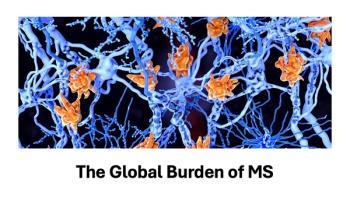
- Vol 29 No 9
- Volume 29
- Issue 9
Life-Altering Gene Therapy Pipeline Poses Challenges
What to expect for these high-dollar drugs.
The deluge of gene therapy drugs that have entered the market in 2019 foreshadows what industry experts believe will be a continuous push toward personalized medicine. With a variety of new, highly specialized drugs in the pipeline, insiders say the healthcare industry can expect to see shifting treatment models along with dynamic payer challenges for these high-dollar drugs.
“There’s going to be a new paradigm in medicine from a cost and patient perspective,” observes Tami John, MD, an instructor in the department of pediatrics section of hematology/oncology, Baylor College of Medicine in Houston. “From a physician standpoint, we’re advocating for negotiations from the federal, state, and hospital levels because these drugs are going to be life-changing.”
As it stands, managed care organizations are already feeling the fallout of containing the cost of gene therapies currently on the market, with some treatment costs exceeding $1 million. The most expensive drug ever approved, Novartis’ Zolgensma (onasemnogene abeparvovec-xioi), indicated for the rare spinal disorder spinal muscular atrophy, carries a staggering $2.1 million price tag. Although a one-time treatment, the advent of more gene therapies for rare conditions, blood disorders, and cancers brings the question of cost to the forefront.
In reaction to soaring costs, many payers and employers alike have begun implementing stop-loss provisions in their insurance policies to cap spending. Stop-loss policies fall into two general categories, individual and aggregate. Despite being a method to protect payers and corporations from shelling out hundreds of thousands of dollars for tailored treatment, individual policies leave patients on the hook for sizeable out-of-pocket contributions, with deductibles ranging from $40,000 on the low end to as much as $500,000, according to Dominic Galante, chief medical officer of
Pipeline promise
There are numerous gene therapies in the pipeline, and similarly, hundreds of clinical trials are underway. Some trials target rare conditions, including sex-linked conditions such as X-linked granulomatous disease and immunodeficiency disorders, according to clinicaltrials.gov; however, hematologic and oncologic therapies appear to dominate the list, as do therapies entering the pipeline over the next 12 to 18 months.
“I expect gene therapy-within the process of chimeric antigen receptor T-cell (
Related article:
According to new research from Prime Therapeutics, the pipeline includes specialty therapies, such as a calcitonin gene-related peptide (cGRP) drug, an alternative for migraine sufferers on Botox therapy, along with treatments for cystic fibrosis and autoimmune digestive disorders.
On the oncological front, Vidaurri anticipates that healthcare providers will bring the combining of gene therapies with immune checkpoint inhibitors seen in clinical trials to the clinic. He cites combining viral therapy such as talimogene laherparepvec (Imlygic), a genetically engineered product, with a checkpoint blocker such as nivolumab, ipilimumab, or pembrolizumab as examples.
Despite these exciting developments, John cautions that until the payment process is refined, providers should focus on finding local hubs with scientific institutions that have the resources to navigate through payment translation. She advises readers to consider institutions that have access as well as the ability to translate in large volumes to refine techniques as well as forge relationships with the payers.
Frieda Wiley, PharmD, RPh is a contract writer and consultant pharmacist.
Articles in this issue
about 6 years ago
Making the Most of Predictive Analyticsabout 6 years ago
How to Prepare for Leadership Changesabout 6 years ago
Top Women’s and Men’s Cancer Treatment Developmentsabout 6 years ago
6 Strategies for Your Hospital Readmissions Reduction Programabout 6 years ago
Drug Shortages Continue to Burden Healthcareabout 6 years ago
Finding-and Keeping-Good Employeesabout 6 years ago
Featured Exec John Baackes, CEO of LA Care Health Planabout 6 years ago
The Future of Healthcare Leadershipabout 6 years ago
Do Certificate-of-Need Laws Still Make Sense in 2019?over 6 years ago
Contemplating the Future of List PricesNewsletter
Get the latest industry news, event updates, and more from Managed healthcare Executive.






















































